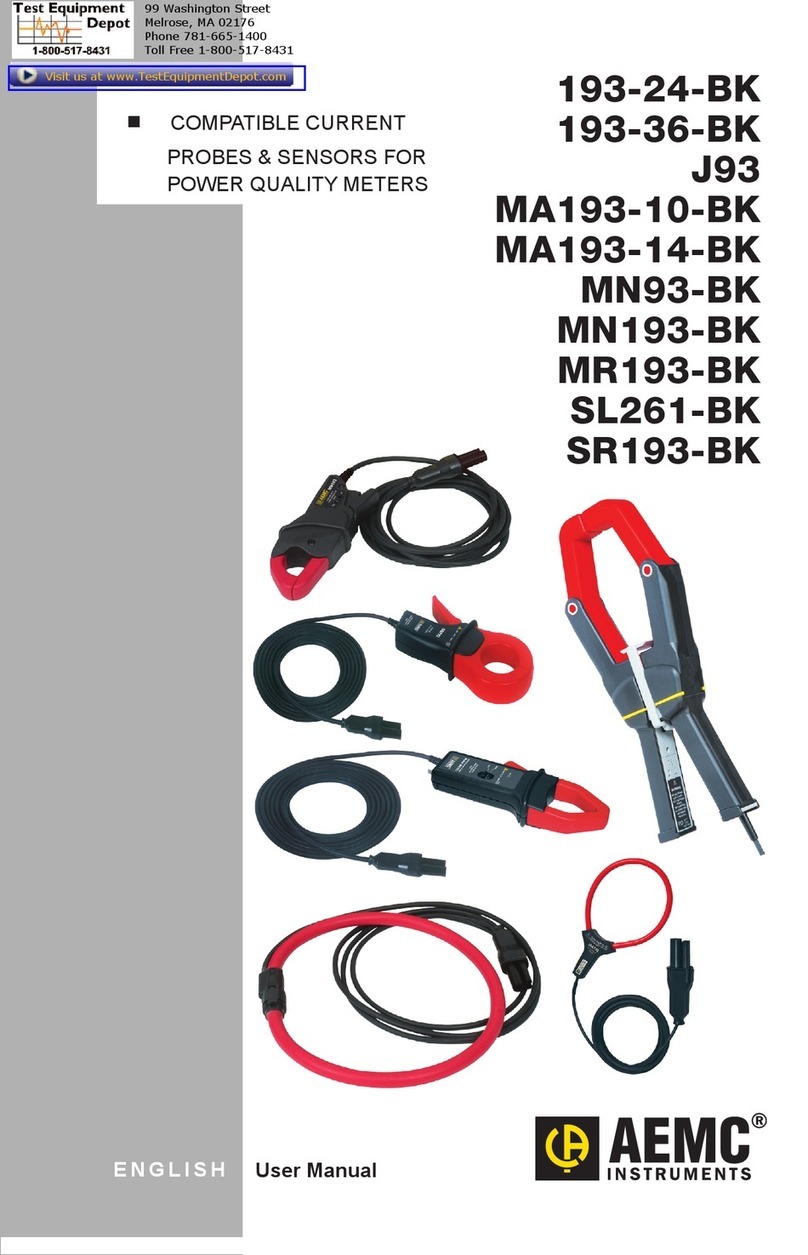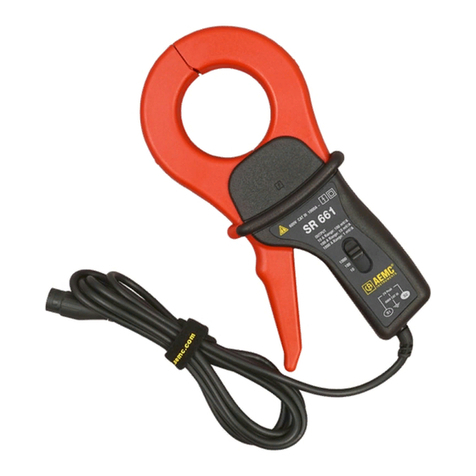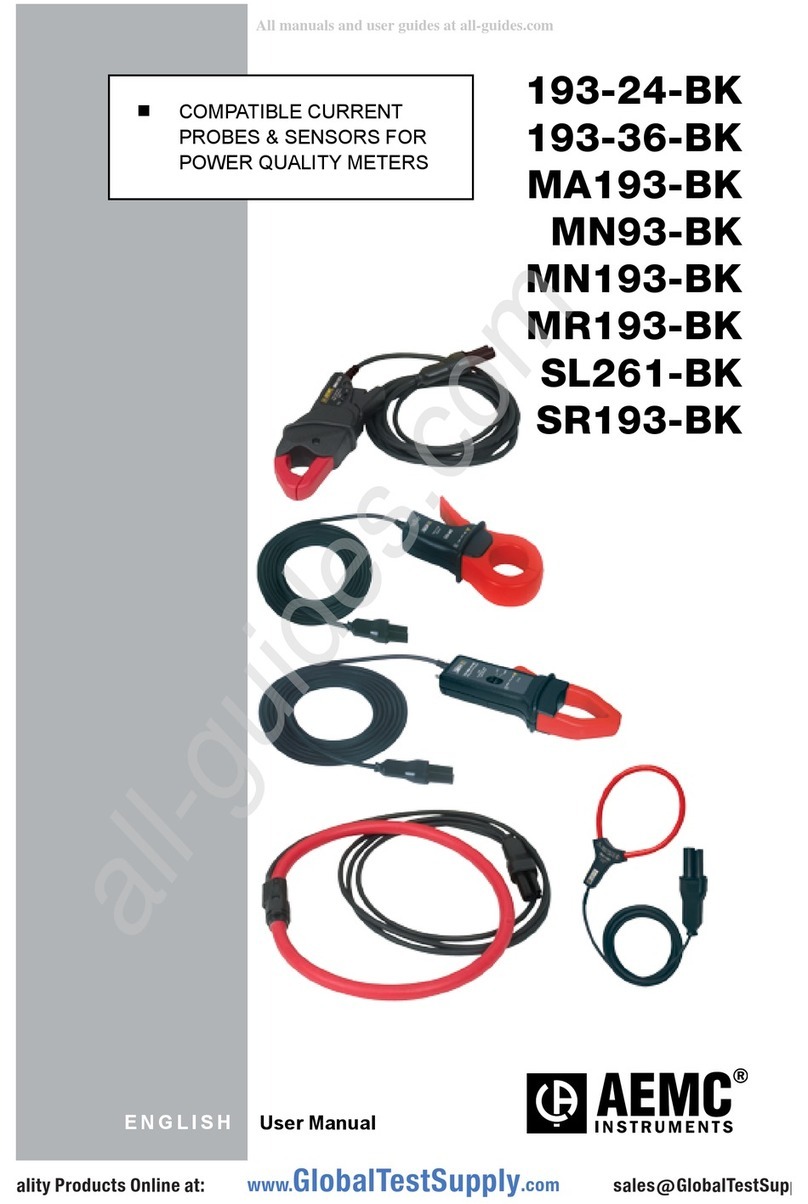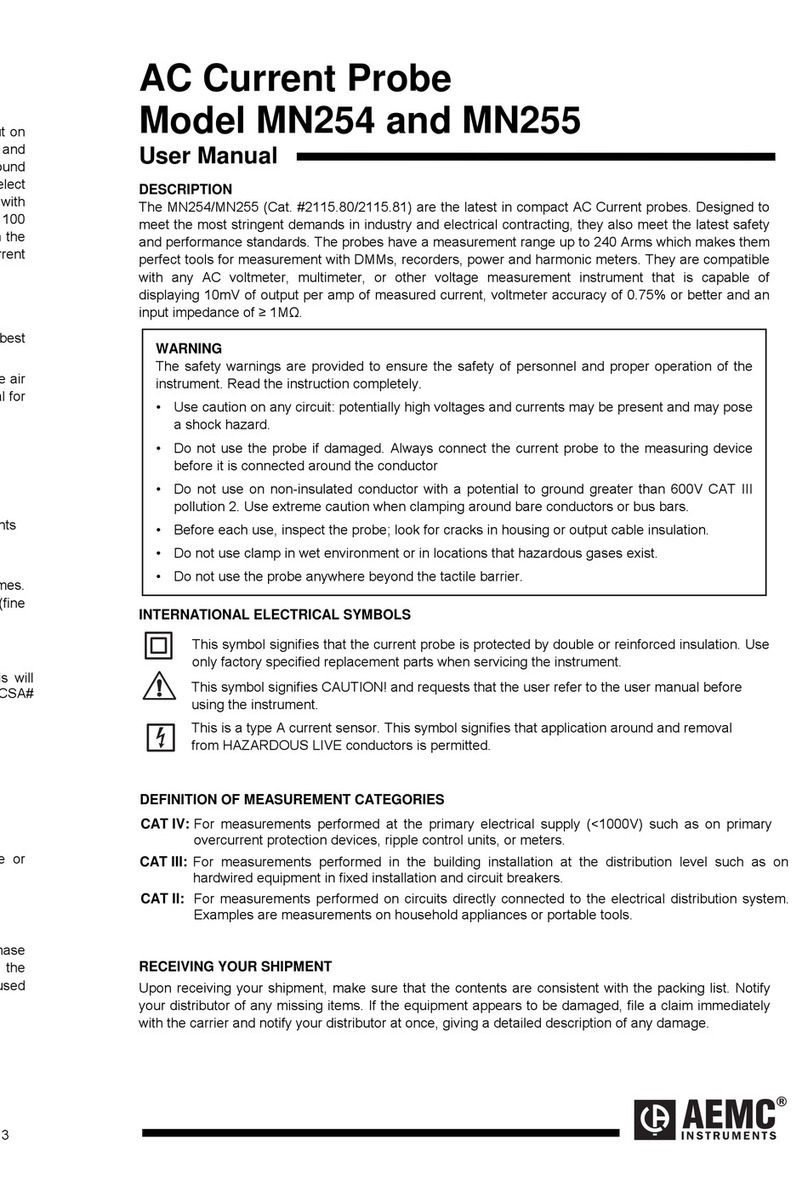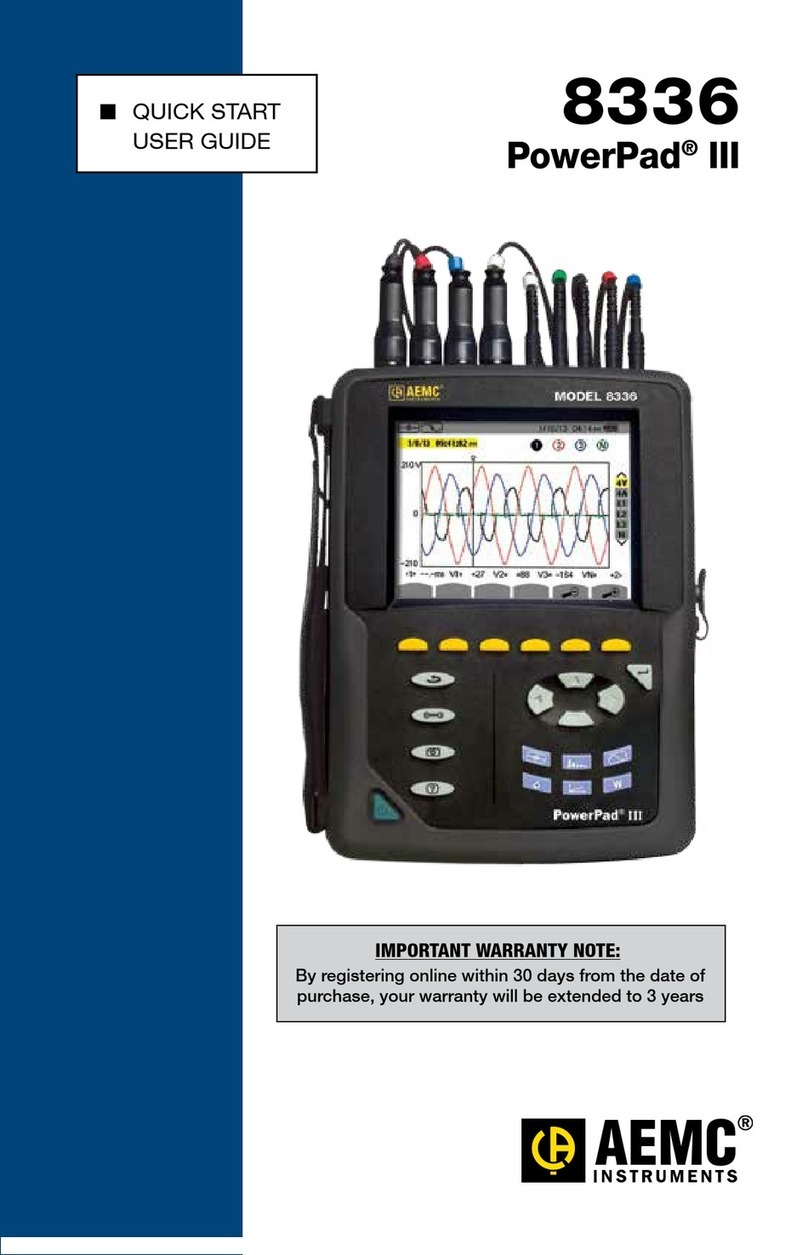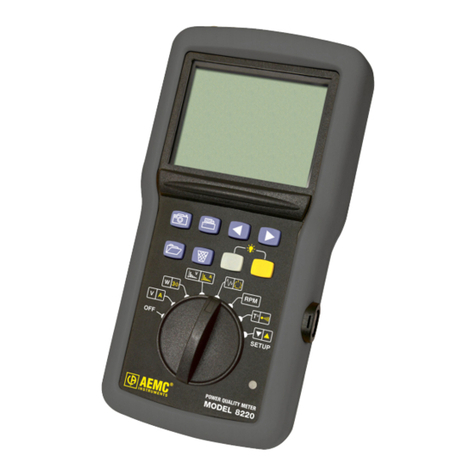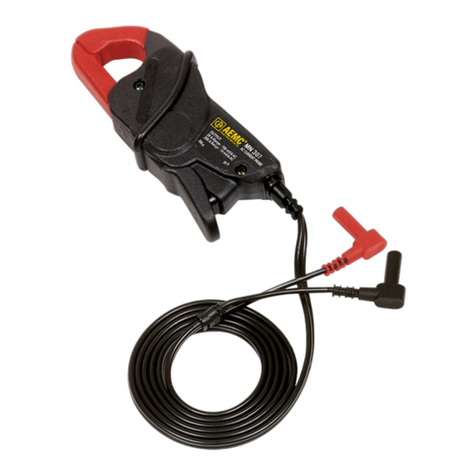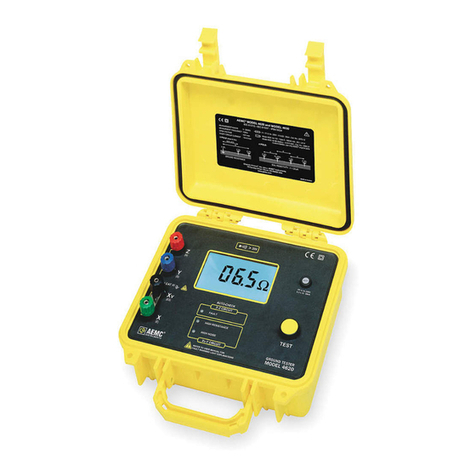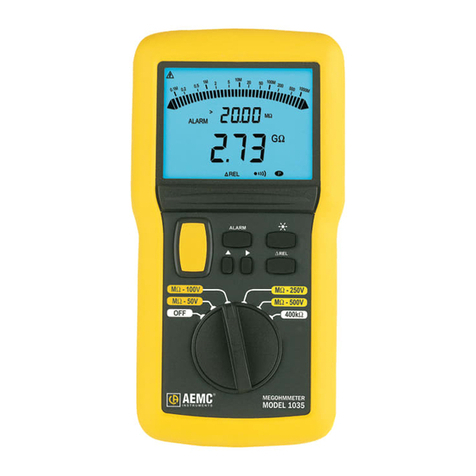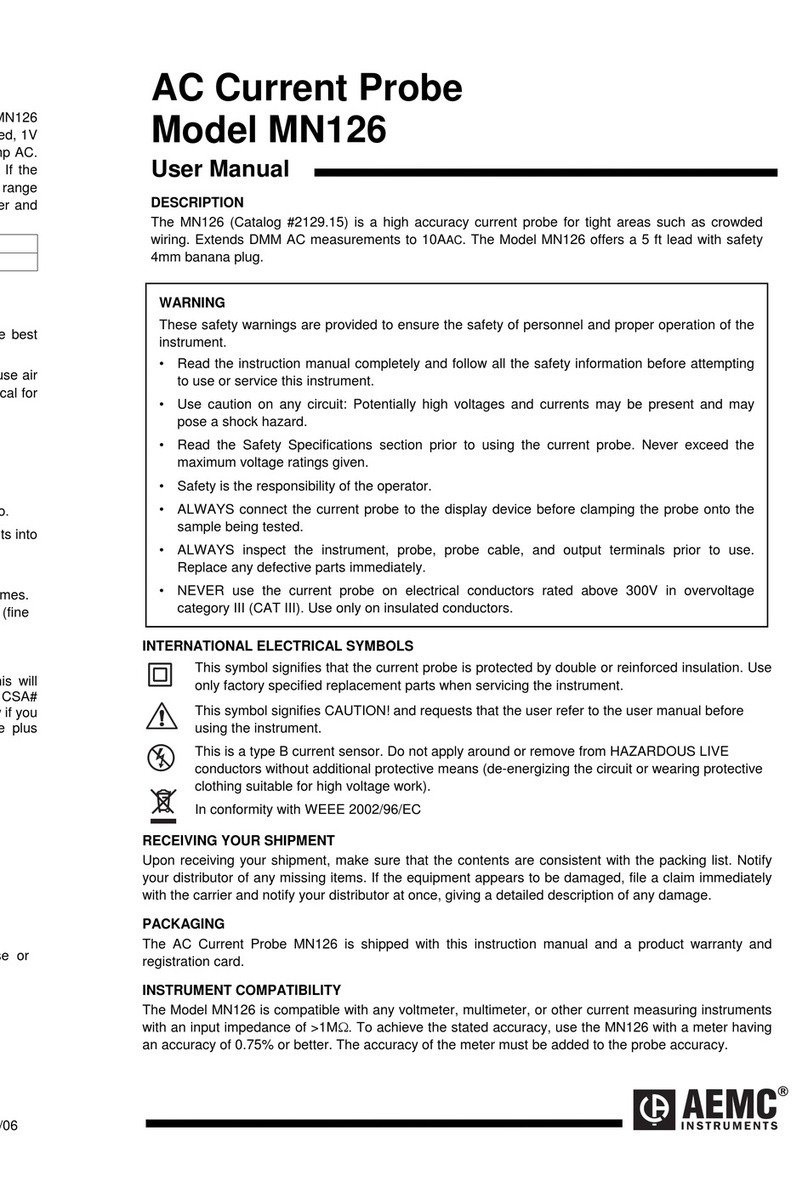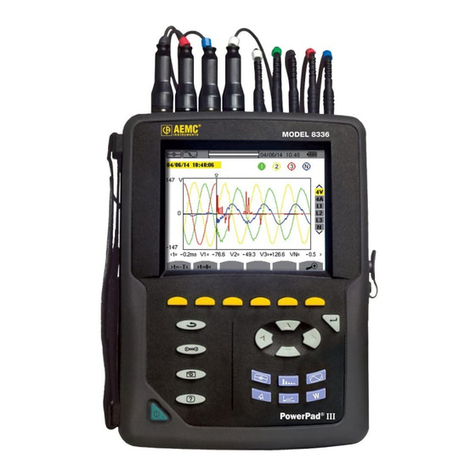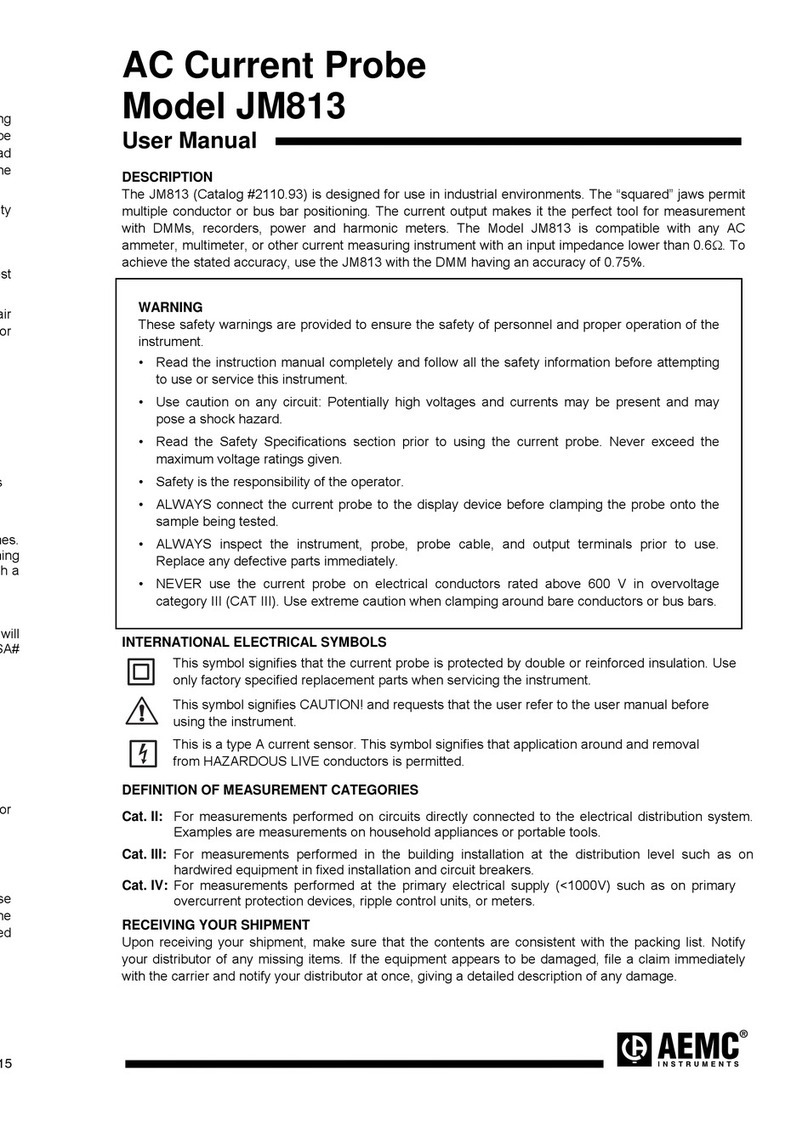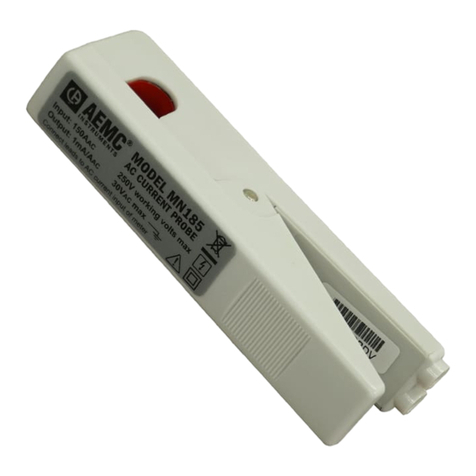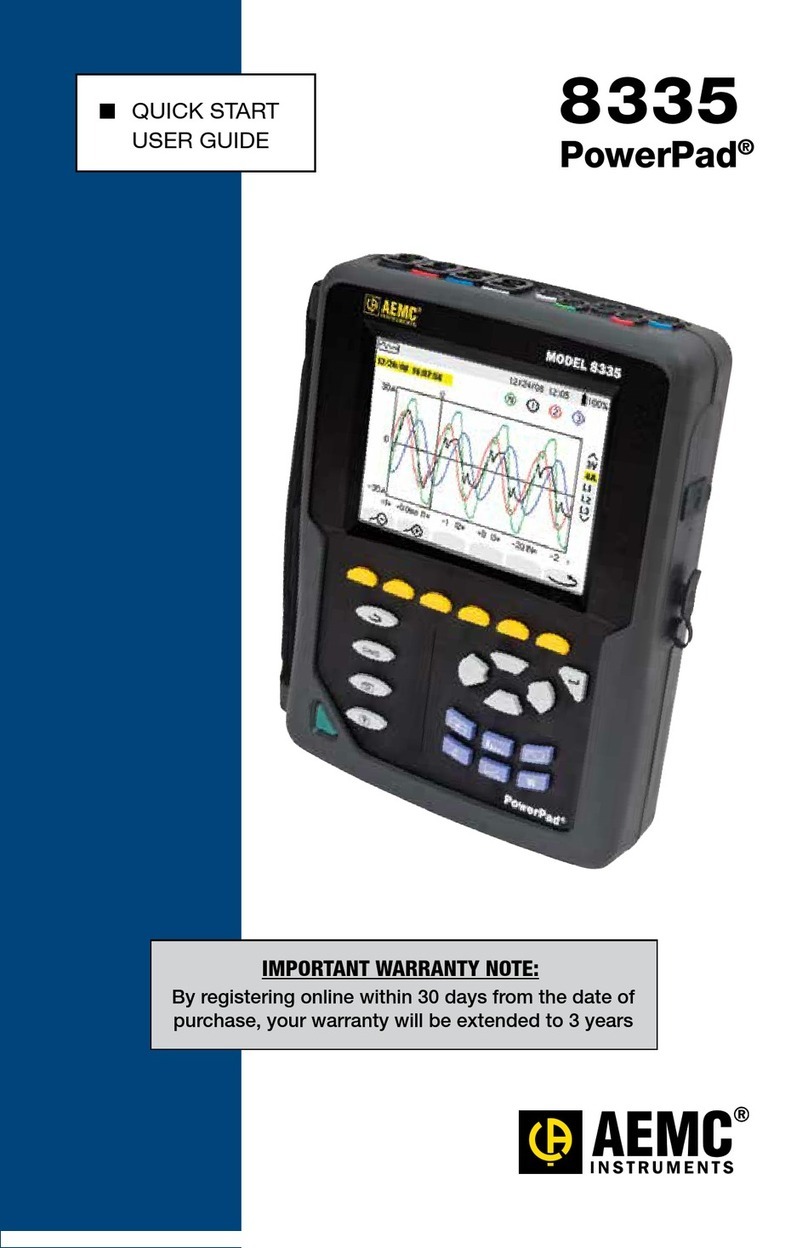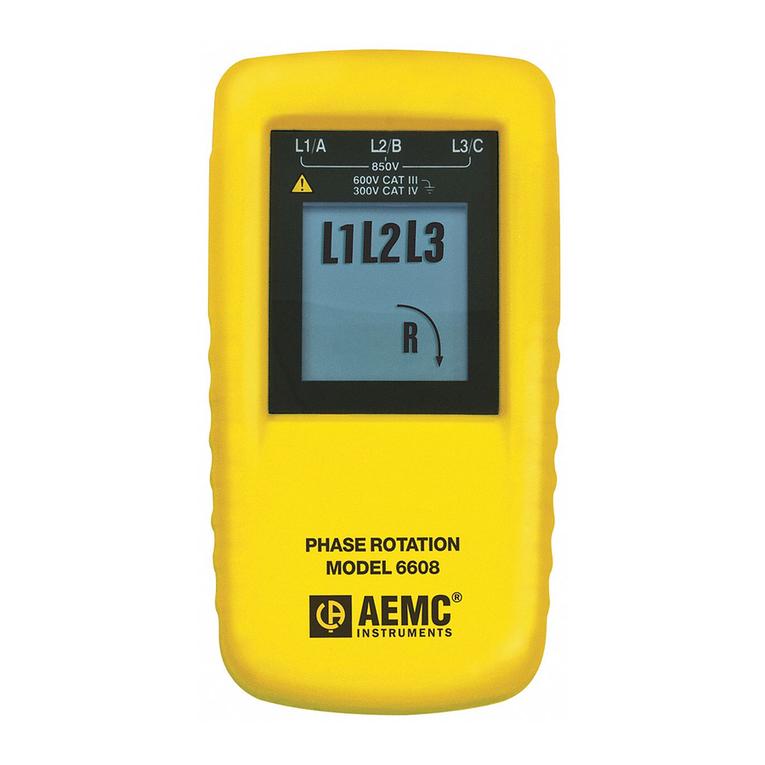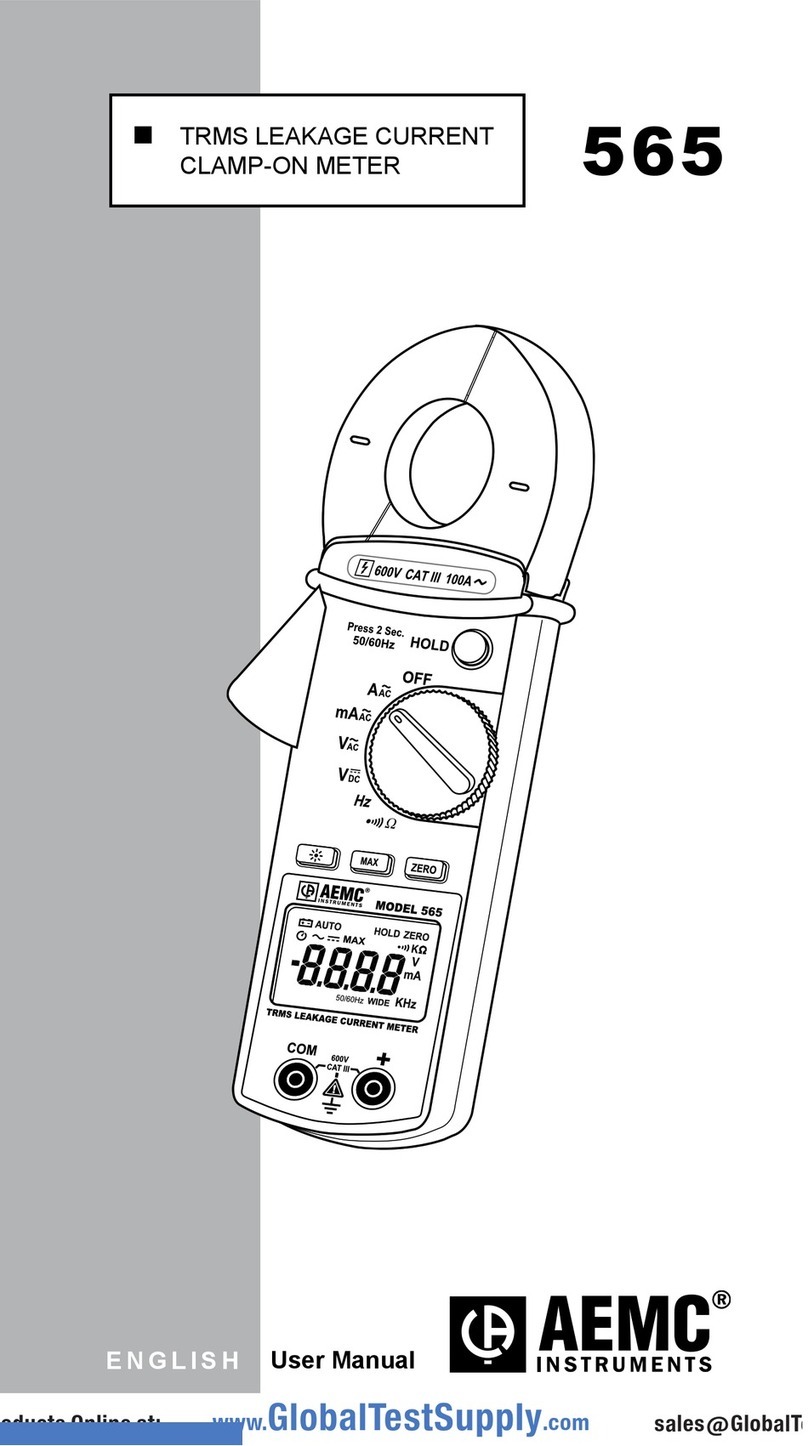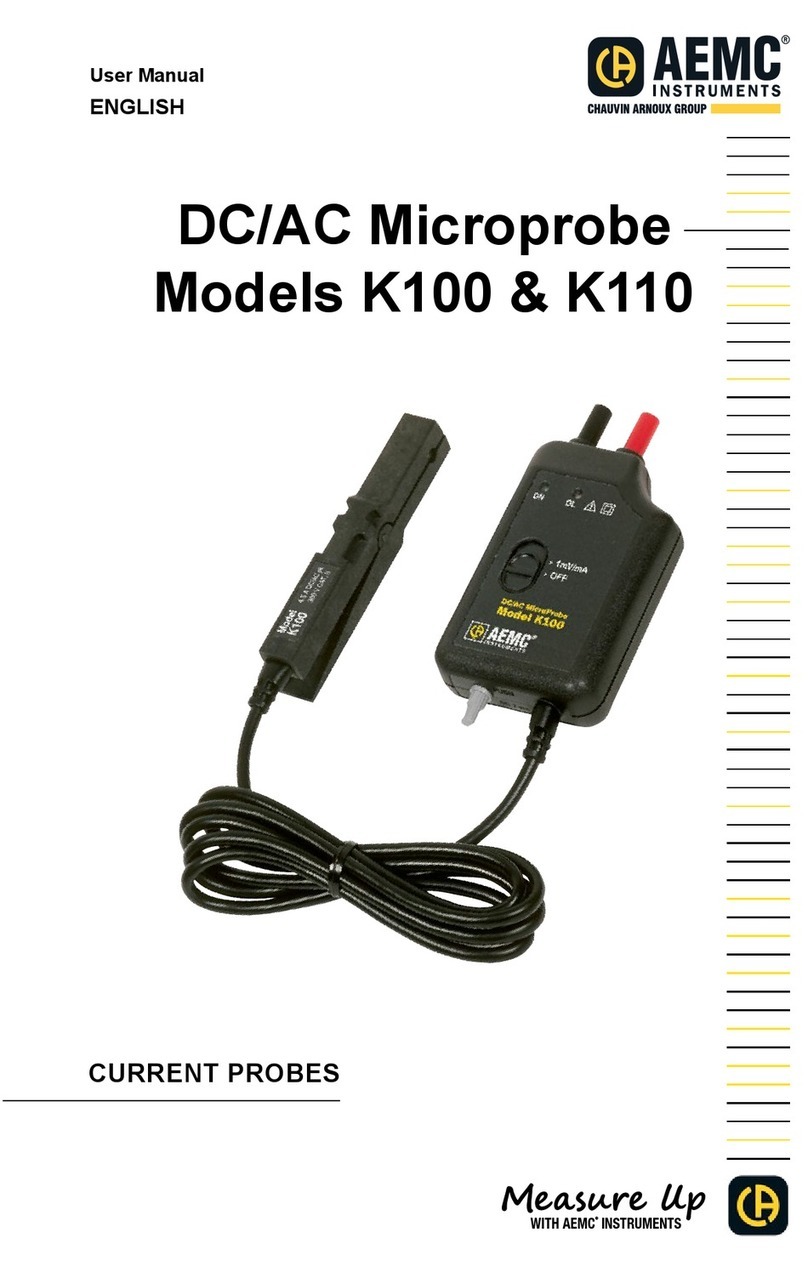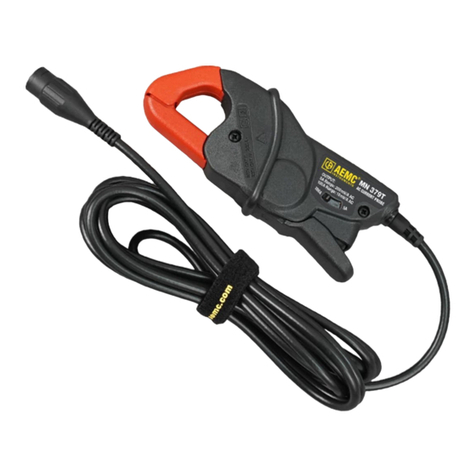
3
CONTENTS
RECEIVING YOUR SHIPMENT...........................................................................7
ORDERING INFORMATION................................................................................7
1 PRESENTATION..........................................................................................8
1.1 THEROTARYSWITCH...................................................................................9
1.2 THEFUNCTIONBUTTONS..........................................................................10
1.3 THEDISPLAY ................................................................................................11
1.3.1 Display Symbols ........................................................................... 11
1.3.2 Measurement Capacity Exceeded (OL)........................................ 12
1.4 THETERMINALS...........................................................................................12
2 THE BUTTONS........................................................................................... 13
2.1 BUTTON.................................................................................................13
2.2 (YELLOW)BUTTON(SECOND FUNCTION)..............................................14
2.3 BUTTON................................................................................................14
2.4 BUTTON..............................................................................................15
2.4.1 Normal Mode ................................................................................ 15
2.4.2 The MAX/MIN Mode + Activation of the HOLD Mode................... 16
2.4.3 Access to the True Inrush™Mode ( set to ) ............... 16
2.5 BUTTON................................................................................................17
2.5.1 Normal Mode ................................................................................ 17
2.5.2 The Hz Function + Activation of the HOLD Mode......................... 17
2.6 BUTTON..............................................................................................18
3 USE............................................................................................................. 19
3.1 INSTALLINGTHEBATTERIES ....................................................................19
3.2 TURNINGTHECLAMP-ONMETERON......................................................19
3.3 TURNINGTHECLAMP-ONMETEROFF....................................................19
3.4 CONFIGURATION.........................................................................................20
3.4.1 Configuring the Maximum Resistance for Continuity .................... 20
3.4.2 Auto Power OFF........................................................................... 20
3.4.3 Configuring the Threshold for True InRush™Measurement......... 20
3.4.4 Changing the Default Temperature Unit ....................................... 21
3.4.5 Configuring the Adapter Function Scale Factor ............................ 21
3.4.6 Default Configuration.................................................................... 22
3.5 VOLTAGEMEASUREMENT(V)...................................................................22
3.6 CONTINUITYTEST .................................................................................23
3.6.1 Lead Resistance Compensation................................................... 23
3.7 RESISTANCEMEASUREMENT..............................................................24
3.8 DIODETEST ............................................................................................24
3.9 CURRENTMEASUREMENT(A)..................................................................25
3.9.1 AC Measurement.......................................................................... 25












